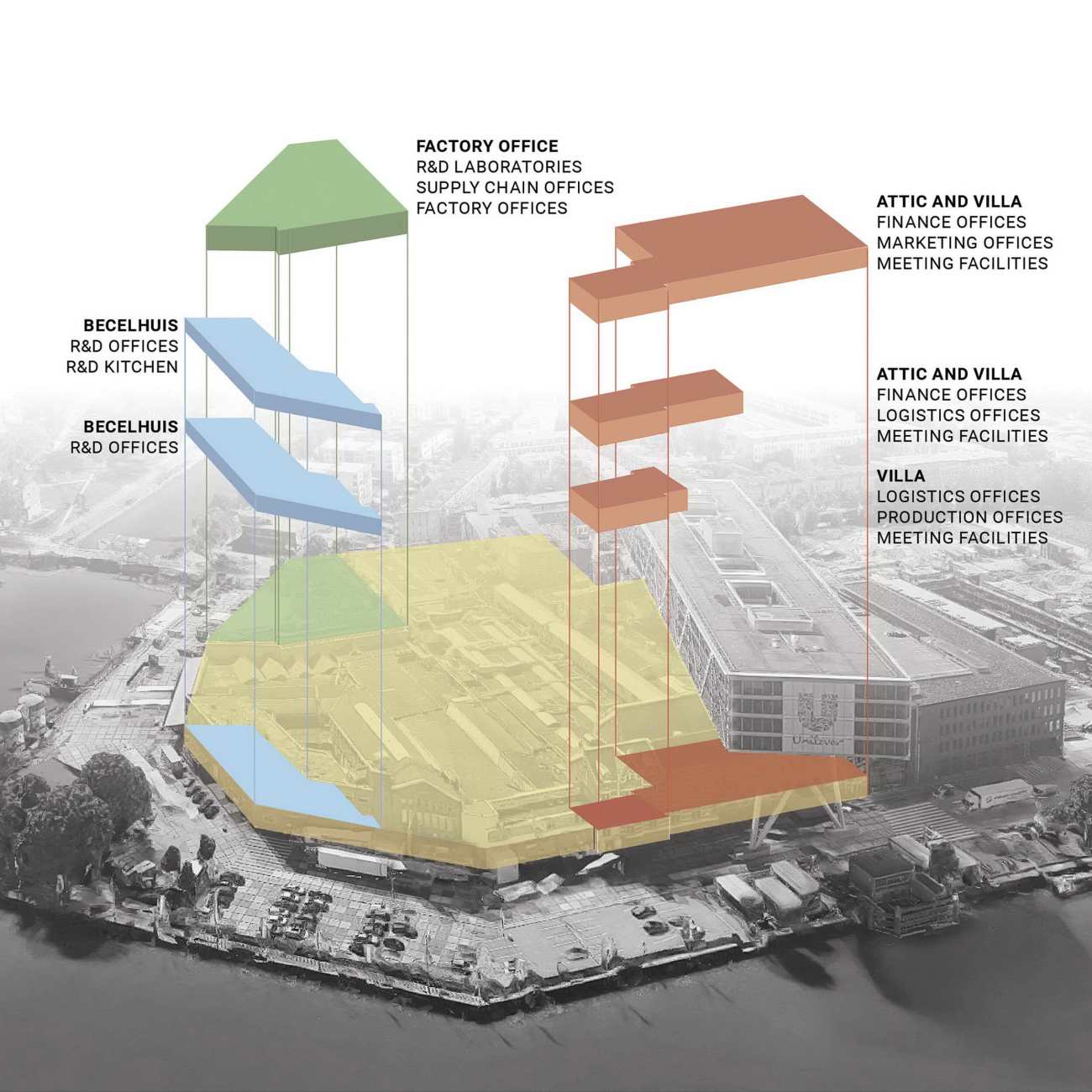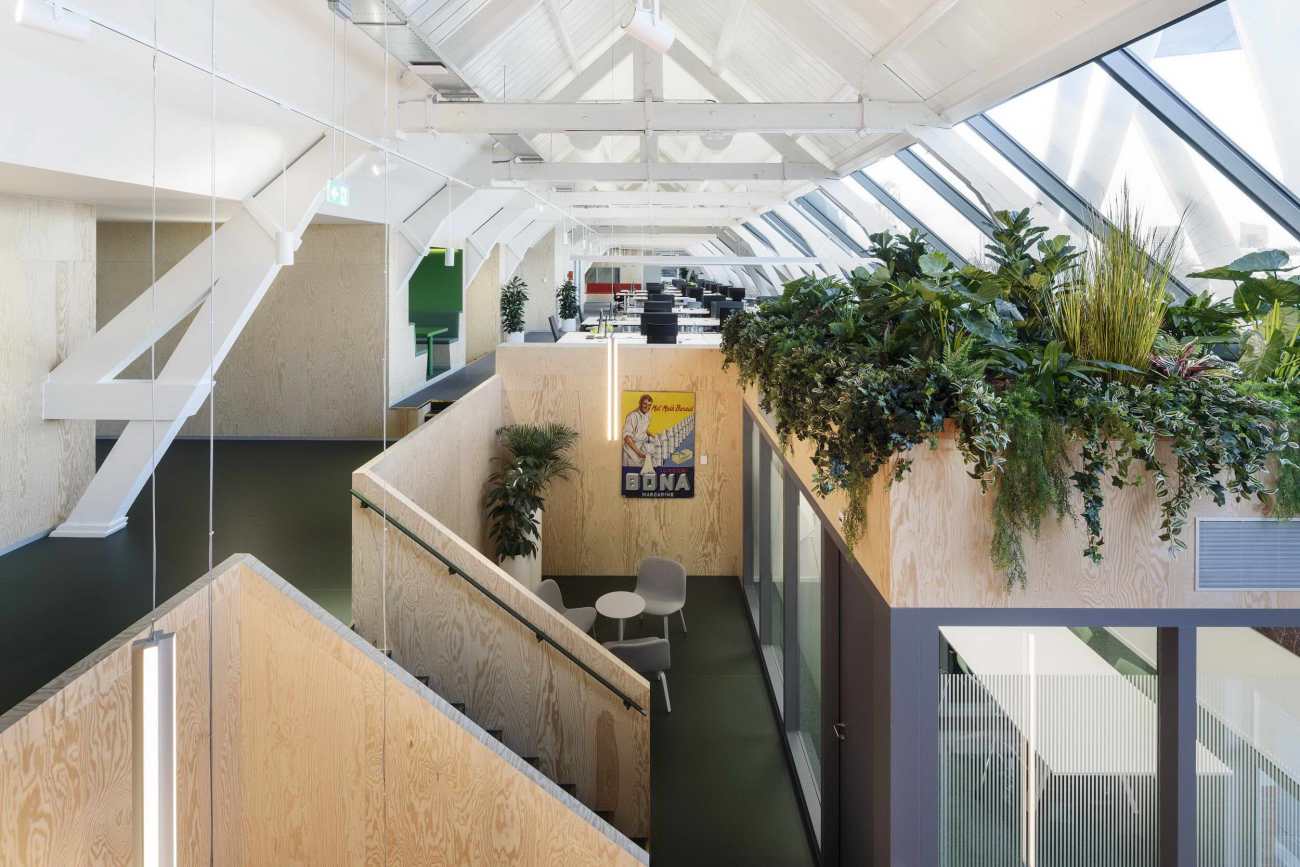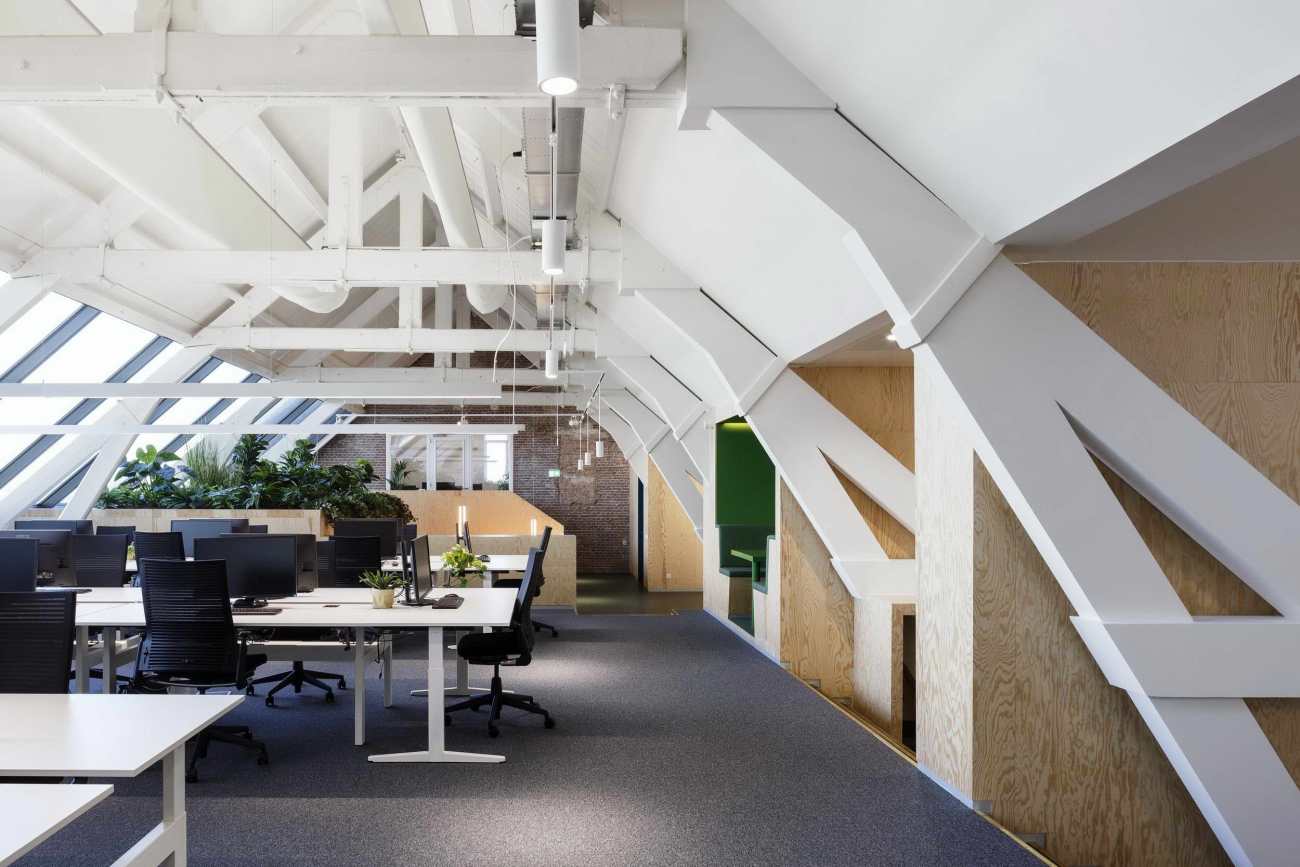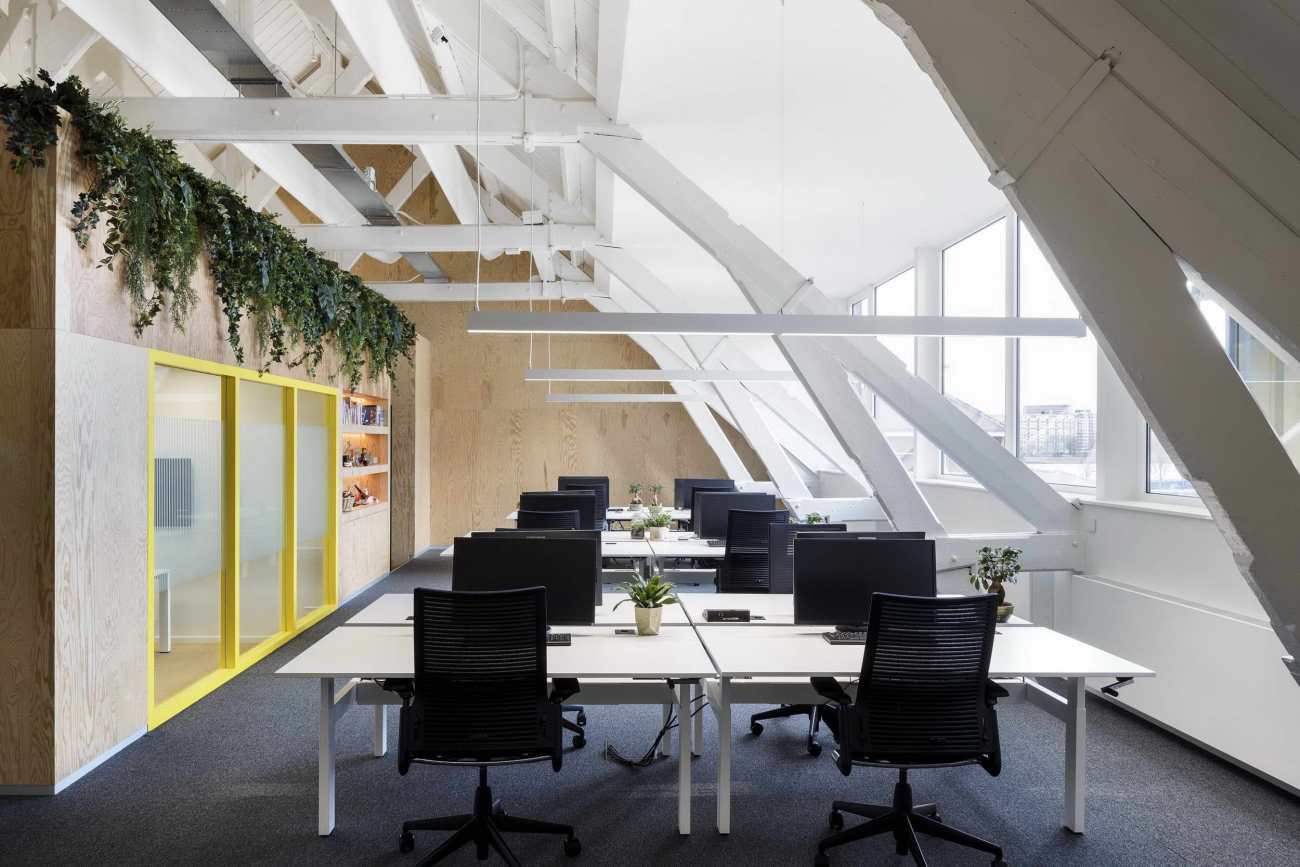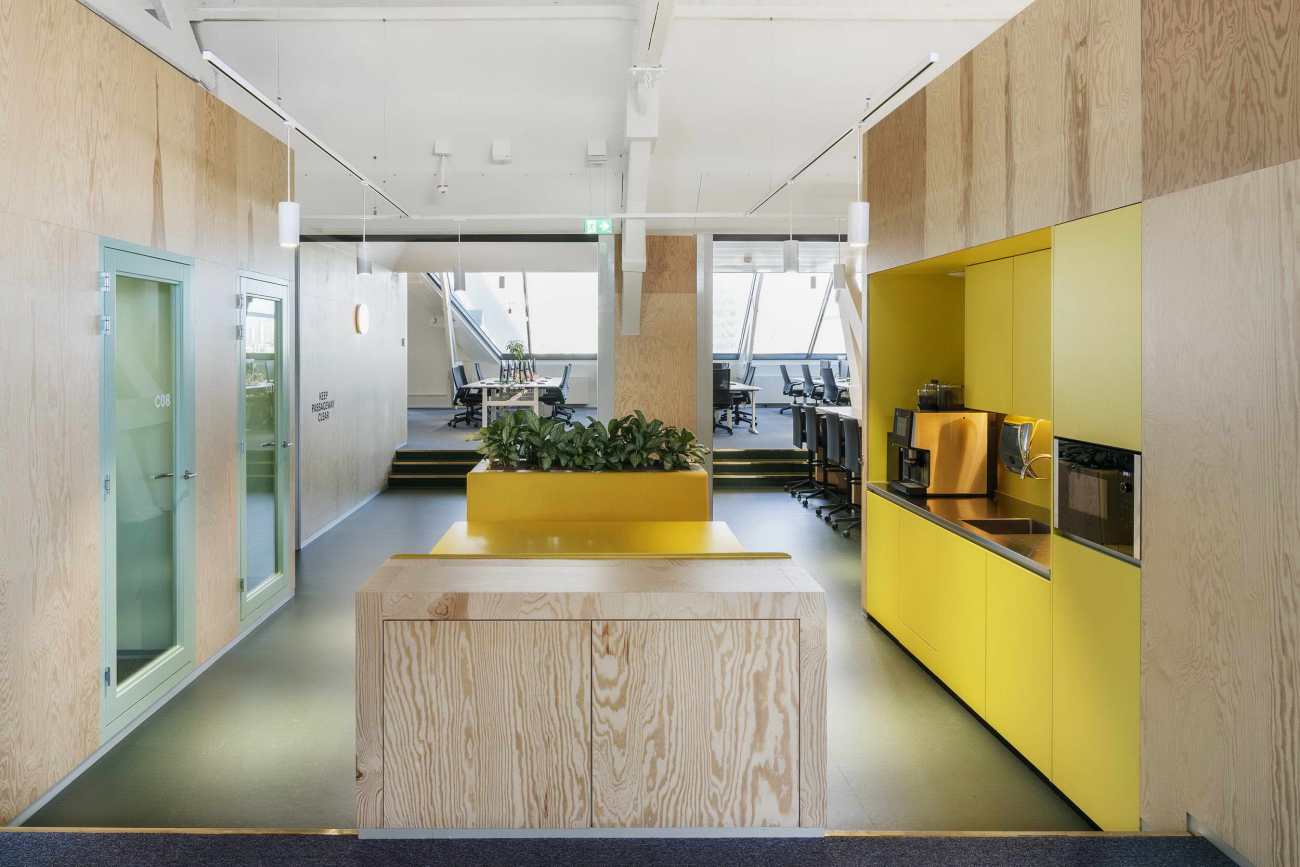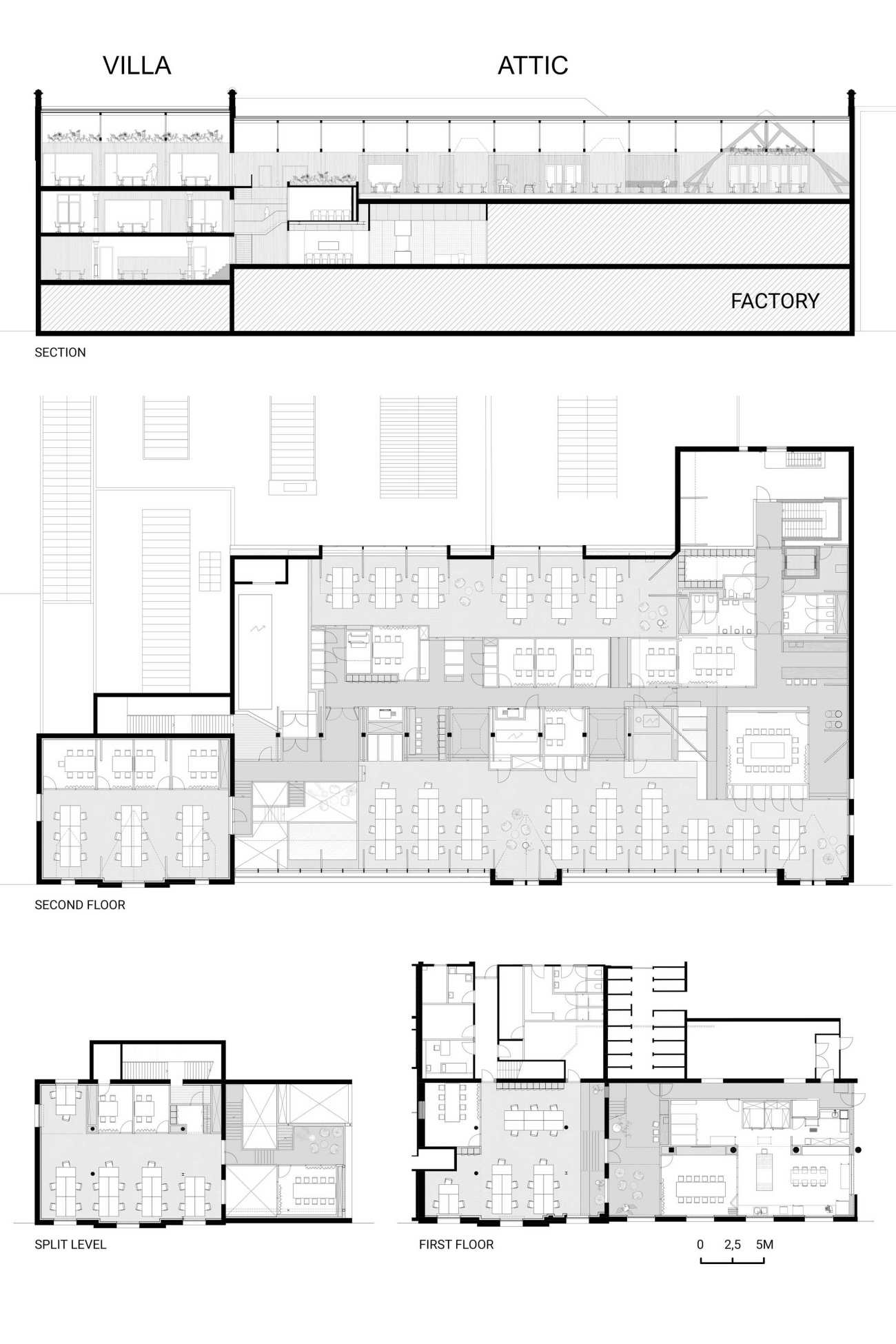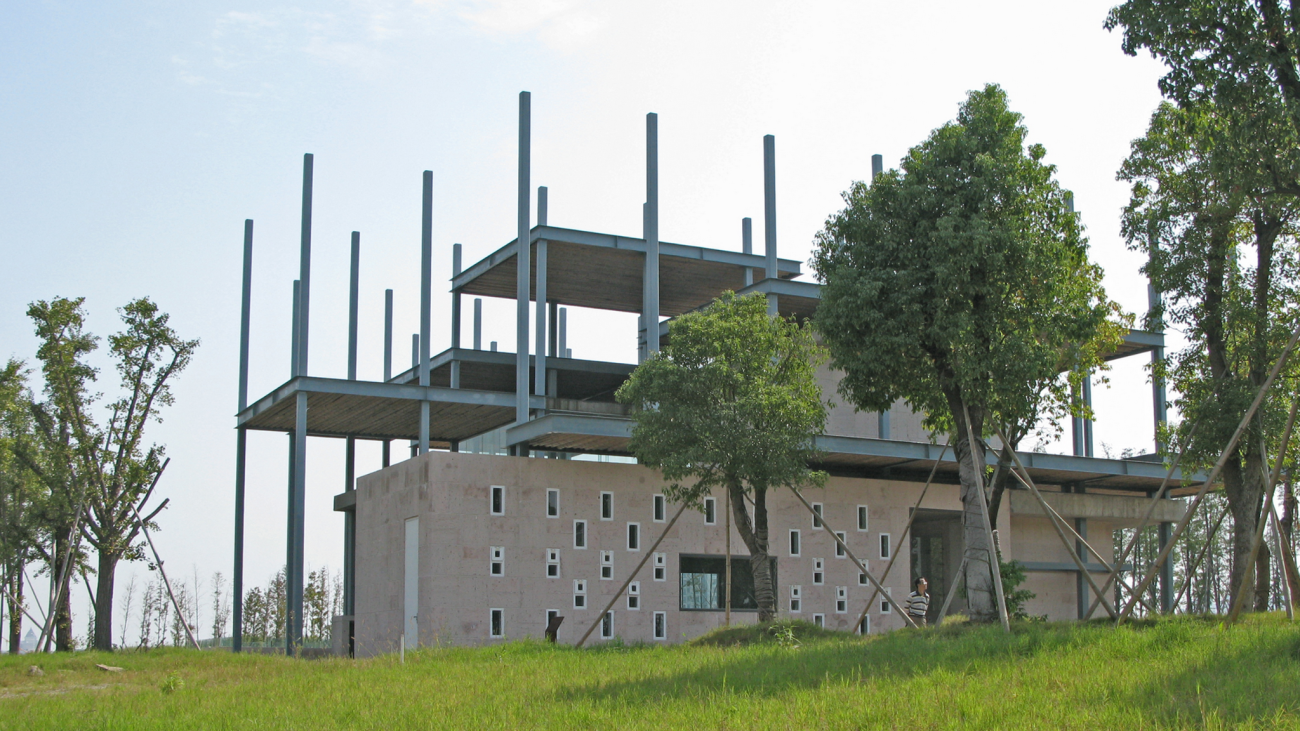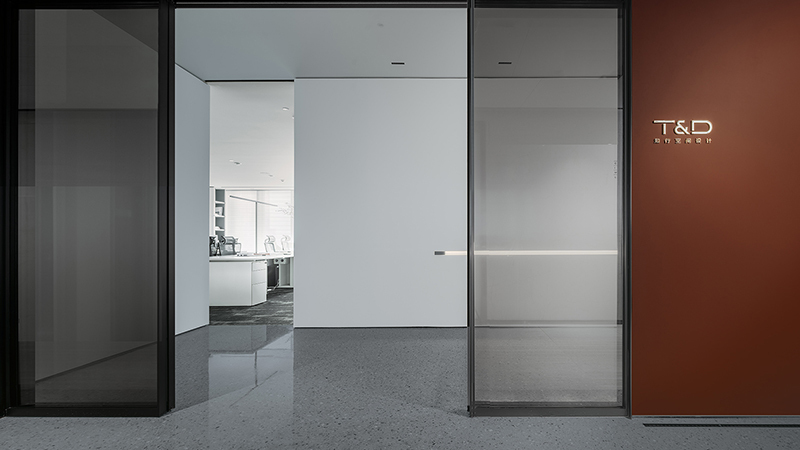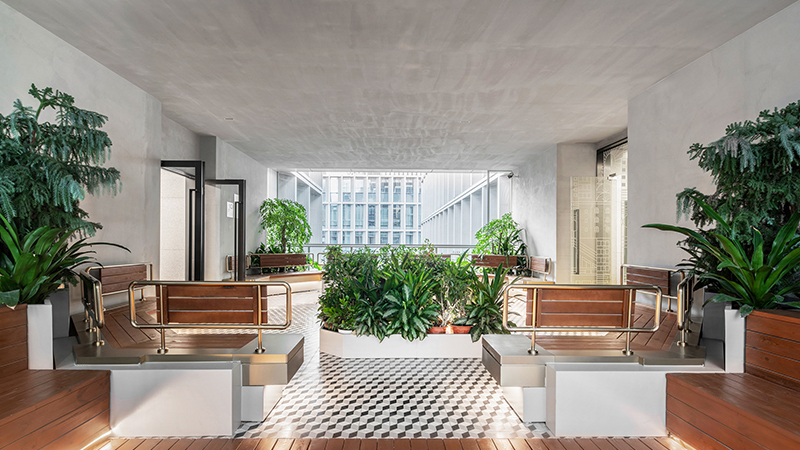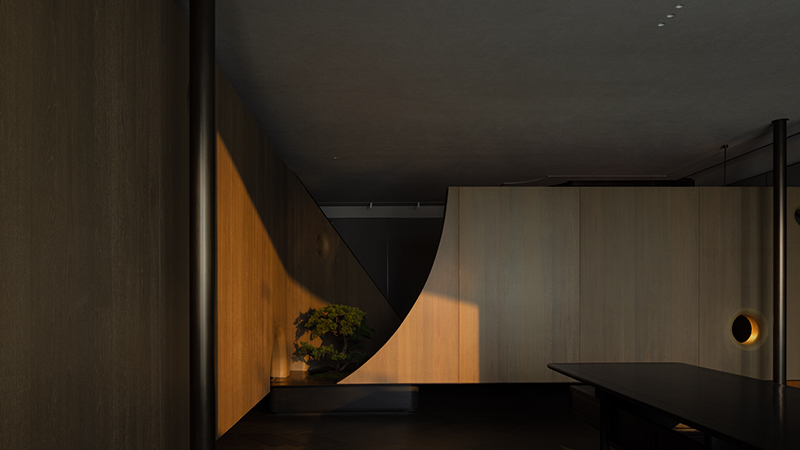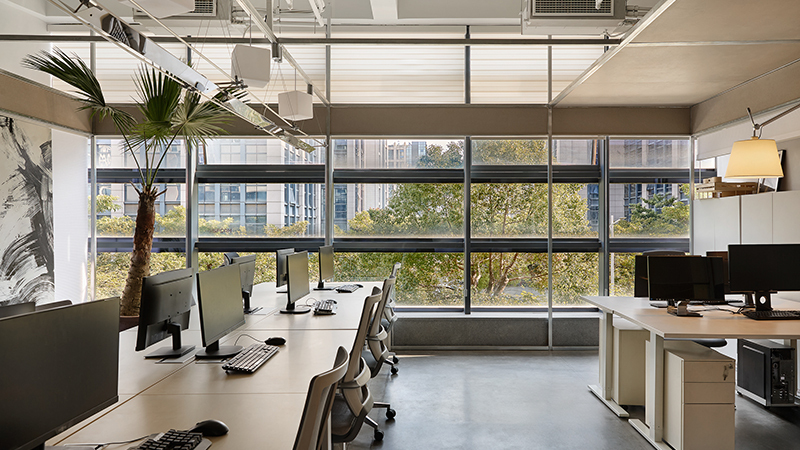| 公司: | Johan De Wachter Architecten | 类型: | 室内 |
|---|---|---|---|
| 地区: | 荷兰 | 标签: | 办公室 |
对位于鹿特丹Upfield生产设施上方的前仓储阁楼进行改造再利用。JDWA将一个大型闲置的阁楼和相邻别墅的空层改造成新的舒适的办公空间,并能看到马斯河的景色。这一具有挑战性的改造通过新旧融合创造了一个具有特色空间品质的办公空间。
Adaptive reuse of former storage attic located above the Upfield production facilities in Rotterdam. JDWA transformed a large unused attic and empty floors of the adjacent villa into new comfortable office spaces with a view over the river Maas. This challenging transformation creates an office space with characteristic spatial qualities by merging the old and the new.
位于鹿特丹马斯河南岸的现有工厂群的开发始于1891年。从那时起,工厂通过有机增长进行扩张,以跟上不断更新的生产过程的变化和需求。由此形成了鹿特丹市具有文化价值的历史层次感的城市景观。2017年联合利华拆分了人造奶油和涂抹剂部门,该部门作为一家独立的公司继续存在,命名为Upfield。Nassaukade地块上的建筑不得不进行重组,并在两家公司之间进行划分。JDWA在现有的工厂综合体中开展了几个项目和干预措施,为该地创造了新的逻辑和组织。其目的是优化空间利用,为办公室、研究设施、物流和生产提供空间,并保持具有历史和文化价值的城市景观。
The development of the existing factory complex on the southbank of the Maas in Rotterdam started in 1891. Since then the factory has expanded through organic growth to keep up with the changes and demands of the ever renewing production processes. This results in a historical layered cityscape with cultural value for the city of Rotterdam. In 2017 Unilever demerged the margarine- and spreads department which continued as an independent company named Upfield. The buildings on the Nassaukade site had to be reorganized and divided between the two companies. JDWA worked on several projects and interventions in the existing factory complex to create a new logic and organization for the site. The aims were to optimize space use to provide room for offices, research facilities, logistics and production, as well as maintain the historical and cultural valued cityscape.
▽场地分析 Diagram
场地的底层作为不同产品的工厂、物流区和仓库使用。上层则空置或未被充分利用。在这个项目中,我们研究了哪些建筑部分可以重新用于新的办公项目。通过这种方式,从研究到生产和分销的整个过程都在鹿特丹的城市背景下被组织起来。第一座建筑(1891年)的阁楼和中层以及别墅(1915年)的3个上层的闲置空间为搬迁办公室提供了机会。
The ground floors of the site stay in use as factories for different products, logistics areas and warehouses. The upper floors were vacant or underused. In this project we investigated which building parts could be reused for the new office programs. In this way, the entire process from research to production and distribution is organized locally, within the urban context of Rotterdam. The unused space in attic and middle floors of the first building built on site (1891) and the 3 upper floors of the Villa (1915) provided opportunities to relocate offices.
这些历史建筑中的闲置区域被重新连接起来,并改造成不同区域的舒适和高质量的办公室。所有的干预措施都代表了公司以不同方式工作的雄心。单独的办公室被减少到最低限度,不同的楼层相互连接,以创造社区感。阁楼是以Upfield的价值观为基础重新设计的。内部设计与公司负责视觉识别和品牌的代表紧密合作。我们的目标是通过激活标准办公程序,将正式和非正式的会议空间混合在一起,为敏捷的工作创造一个富有创意和活力的工作空间。由于Upfield的工作性质特殊,厨房和品尝台也是项目的一部分。这些用于测试新产品的厨房被整合到工作环境的概念中。为了将所有这些动态转化为计划,我们挑战了标准的办公室布局,并将会议室设计为家具部件。这些家具被放置在开放的空间中,以创造不同大小的区域。这样就形成了特殊功能的空间,并将开放空间转化为一个多样化的工作环境。
These unused areas in the historical buildings are reconnected and transformed into a comfortable and high-quality offices in different areas. All interventions represent the companies ambition to work differently. Individual offices are reduced to the minimum and different levels are interconnected in order to create the sense of community. The Attic was redesigned with Upfield's values in mind. The interiors are designed in close collaboration with the company’s representatives responsible for the visual identity and branding. The ambition was to create a creative and dynamic workspace by activating the standard office program with a mix of formal and informal meeting spaces for agile working. Because of the special kind of work Upfield does, also kitchens and tasting counters are part of the program. These kitchens, for testing new products, are integrated in the concept of working environment. To translate all these dynamics into a plan we challenged the standard office layout and designed the meeting rooms as furniture pieces. These furniture pieces are placed in the open space to create zones of various sizes. This results in spaces for special functions and transforms the open space into a diverse working environment.
不同楼层之间的连接是通过在规划的核心位置插入一个大的空隙来实现的,在这里,两栋建筑相遇。视觉上的连接就是这样实现的。一个大型的木质楼梯连接着不同的楼层。阁楼和别墅之间的墙体已被清理,并放置了大型玻璃门窗,以提供通往空隙的通道。空隙中放置了共享设施和会议室,以激活这个特殊空间。主景观办公室位于顶层双斜屋顶下。在空间的中心引入了一个连接区,在这里放置了带有会议室、非正式会议室和共享设施的家具件。这个区域将阁楼层划分为几个具有独特空间品质的区域。
The connection between the different floor levels is realized by inserting a large void in the core of the plan, where the two buildings meet. The visual connection is made possible like this. A large wooden staircase connects the different levels. The wall in between the Attic and the Villa has been cleaned and large glass windows and doors are placed to provide access to the void. Shared facilities and a meeting room are placed in the void to activate this special space. The main landscape office is located on the top floor under the double pitched roofs. A connecting zone is introduced in the center of the space where the furniture pieces with meeting rooms, informal meeting rooms and shared facilities are placed. This zone divides the attic floor in several zones with unique spatial qualities.
 | 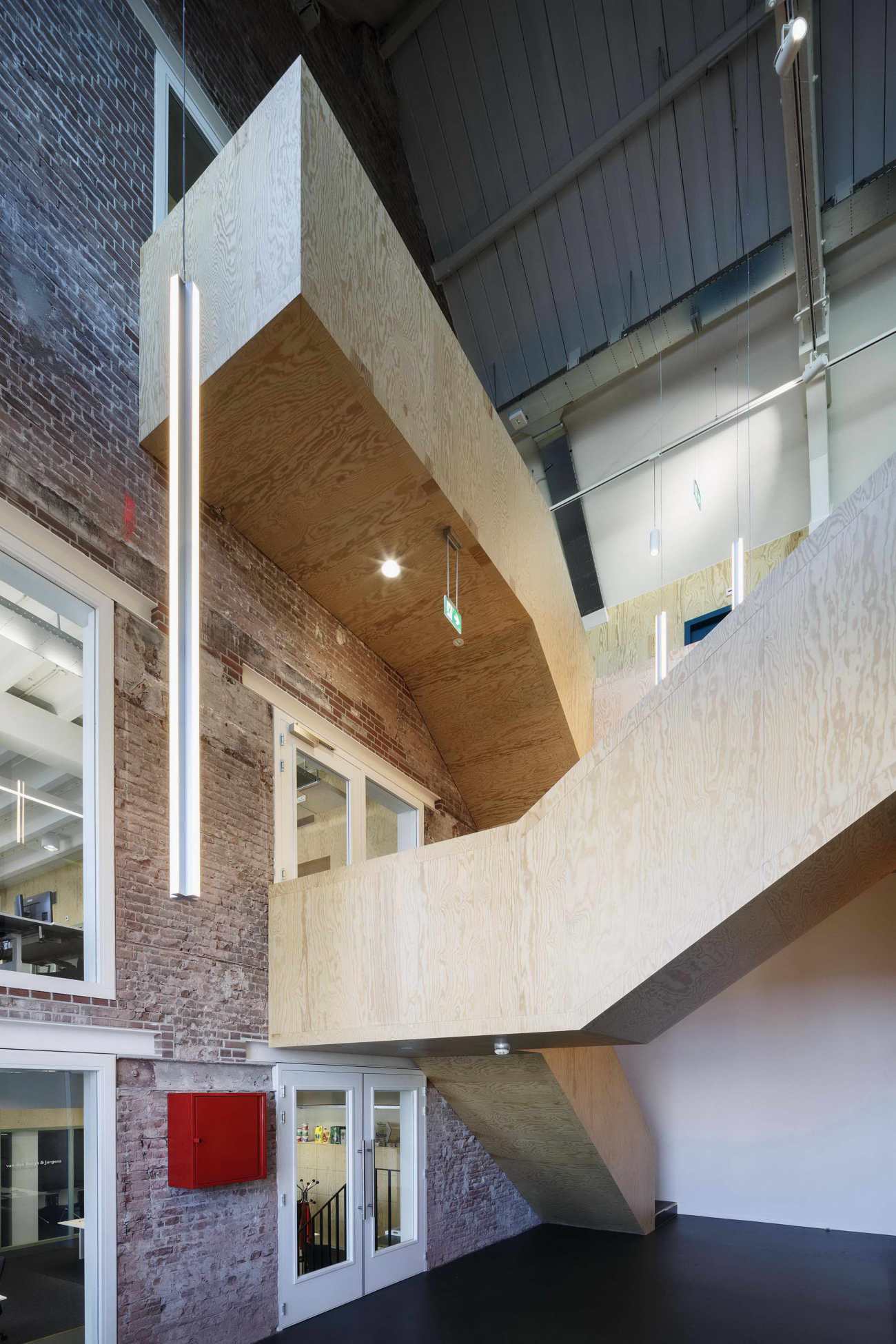 |
为了在顶部提供日光,屋顶的一部分被玻璃取代,为建筑内部提供了光线,并为员工提供了马斯河的壮观景色。第二层屋顶通过在背面设置两个大型穹顶打开。中心区通过精心设计的天窗来获得光线。为了进一步优化空间利用,家具的墙面具有多功能性,因为它们具有电话亭、储物柜、复制空间、产品展示和技术安装空间等功能。室内的大胆和坚固的细节与家具的规模相一致,并强调了新的干预和现有建筑之间的对比。应用的木材和大量的植物代表了Upfield基于植物的理念。
To provide daylight on the top a part of the roof has been replaced with glass offering light inside the building and have a spectacular view over the river Maas for the employees. The second roof is opened up by placing two large dormers on the backside. The centre zone gets its light by carefully designed skylights. To optimise space use further, the walls of the furniture pieces are multifunctional as they have functions like telephone booths, lockers, reproduction spaces, product displays and space for technical installations integrated inside them. The bold and robust details in the interior complies with the scale of the furniture pieces and emphasizes the contrast between the new interventions and the existing buildings. The applied wood and the numerous plants represent Upfield's plant based philosophy.
 | 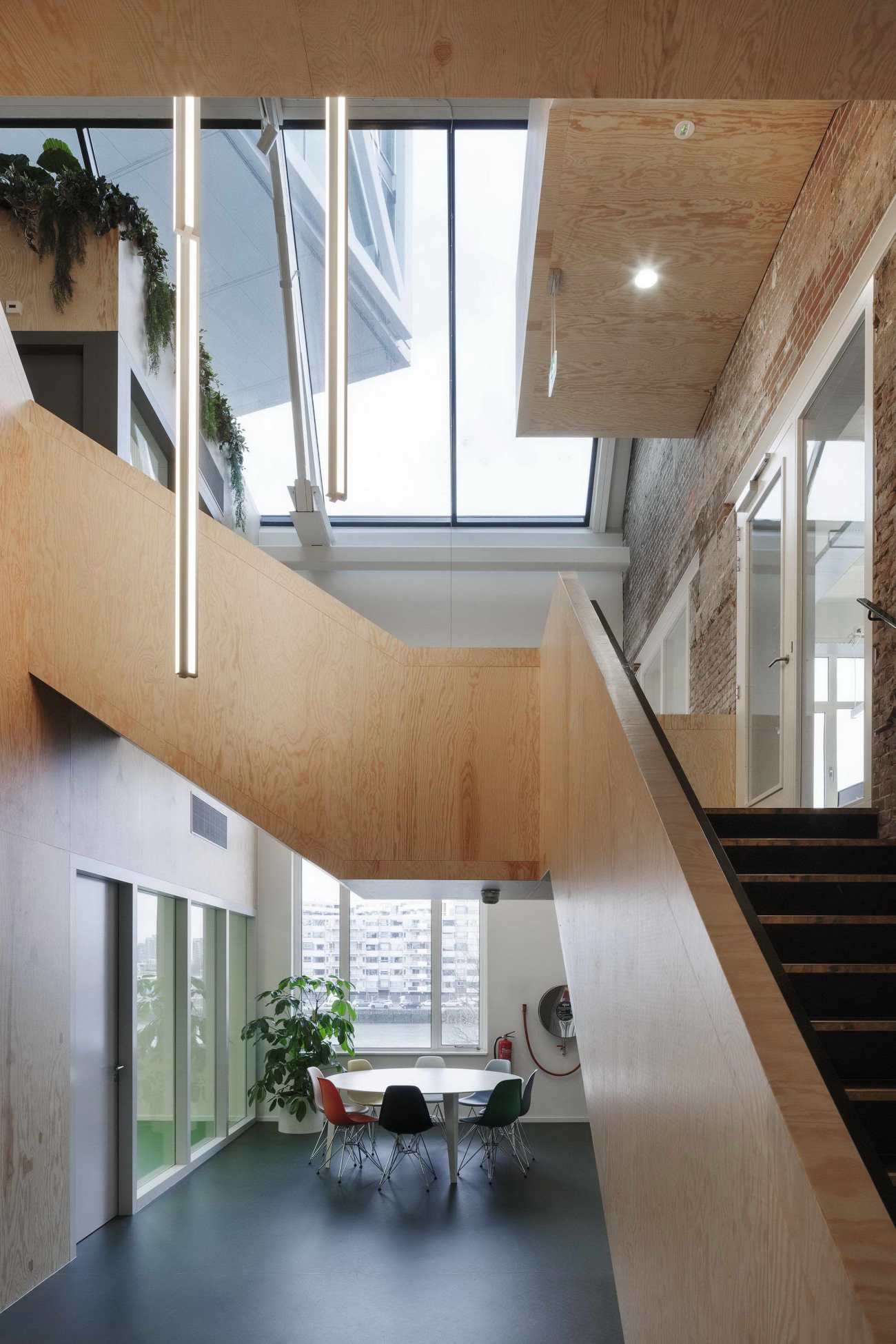 |
在设计过程中,可持续性一直是一个主要问题。通过密集的再利用、功能转移和改造,建筑的使用得到了优化。通过将所有办公室合并在一个地点,创造了很多灵活性。现有的建筑外壳已被完全隔热,并安装了高隔热玻璃的新窗框。除了对建筑外壳进行节能升级外,还采用了新的可持续发展设施。作为底层工厂生产过程中的副产品,过剩的热量被重新利用,为办公空间加热。通过确保更多的日光进入建筑,创造了一个高质量的工作环境,同时也节省了能源。
Sustainability has been a main issue during the design process. Through intensive reuse, relocation of functions and transformation the building use has been optimized. By combining all offices on one site, lots of flexibility is created. The existing building shell has been fully insulated and new window frames with high insulating glass are placed. In addition to the energetic upgrade of the buildings’ shell, new sustainable installations are implemented. The excessive heat, a by-product of the production process of the underlying factory, is reused to heat up the office space. And by ensuring that more daylight enters the building, a qualitative working environment is created and energy is saved at the same time.
在现有的各种干预措施,建筑外部的密集改造和内部的新干预措施将延长建筑的寿命。在不失去现有建筑历史特征的前提下,创造了一个现代办公环境。
The various interventions in the existing, the intensive renovation of the buildings exteriors and the new interventions in the interiors will extend the life of the buildings. A contemporary office environment has been created without losing the historical character of the existing building.
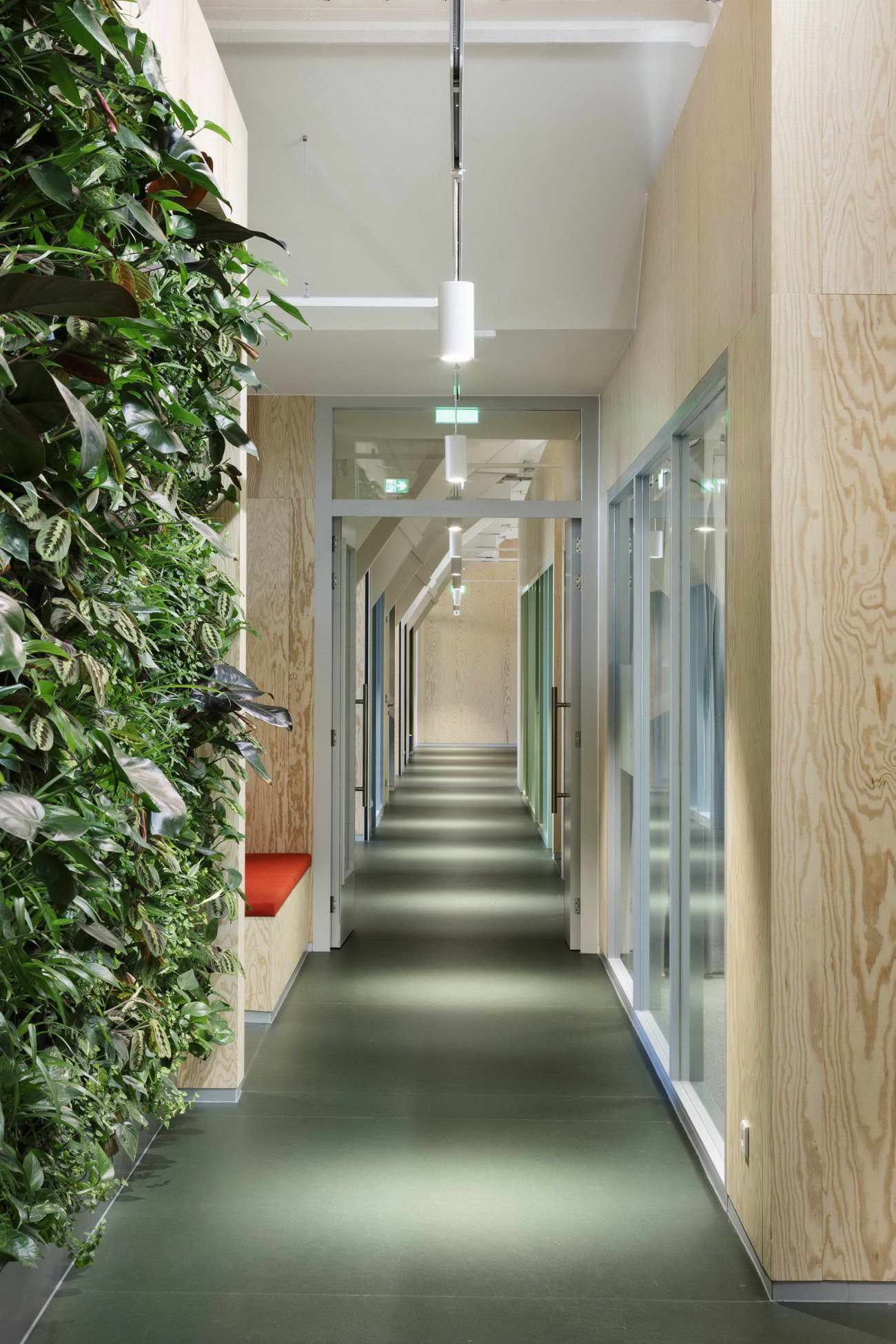 |  |
▽平面图/剖面图 Section & Plan
Project: Upfield office ‘the attic’
Completion: 2019
Architect: Johan De Wachter Architecten, Rotterdam
Client: Upfield Office (Rotterdam)
Address and Location: Nassaukade, 3071 JL Rotterdam, NL
Program: Transformation of the existing factory into a contemporary office space.
Team: Marieke van Hensbergen, Johan De Wachter, Heejin Chung, Nicolette Marzovilla, Anna Kintsurashvili, David Zatloukal, Helen Devine, Xavier Aguilar, Virginia Lazarou, Marco Moretto and Patricia Mata
Photographer: Sonia Mangiapane
更新日期:2020-11-27 16:36:08
非常感谢 Johan De Wachter Architecten 带来的精彩项目, 查阅更多Appreciations towards Johan De Wachter Architecten for sharing wonderful work on hhlloo. Click to see more works!

